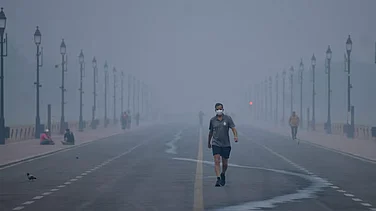After a gap of over two-and-half months, senior military commanders from India and China met on Sunday for the ninth round of talks to discuss a possible solution to the nearly nine-month border standoff in eastern Ladakh.
The Corps Commander-level meeting began at around 10 AM at the Moldo border point on the Chinese side of the Line of Actual Control (LAC) in eastern Ladakh and was continuing till after 9 PM, sources said.
People familiar with the negotiations said India insisted that the onus is on China to carry forward the process of disengagement and de-escalation at the friction points in the region.
India has been maintaining that the disengagement process has to start simultaneously at all the friction points and no selective approach was acceptable to it.
Close to 100,000 Indian and Chinese troops are deployed in eastern Ladakh as both sides have been holding on to their ground and showing readiness for a long-haul, amid continuing diplomatic and military talks to find an amicable solution.
Reflecting India's firm approach in handling the situation, Army chief Gen MM Naravane nearly two weeks back said that Indian troops will hold their ground as long as it takes to achieve the "national goals and objectives" even as he hoped for an amicable resolution of the row through talks.
Sunday's talks took place nearly two weeks after India handed back to China a soldier of the People's Liberation Army after apprehending him at the southern bank of Pangong Tso in eastern Ladakh. It is learnt that India's gesture has generated a positive atmosphere.
The Indian delegation at the talks was led by Lt Gen PGK Menon, the Commander of the Leh-based 14 Corps.
In the military talks, India has all along been demanding restoration of status quo ante in all areas of eastern Ladakh prior to April. The face-off had begun on May 5.
The eighth and last round of the talks had taken place on November 6 during which both sides broadly discussed disengagement of troops from specific friction points.
The seventh round of Corps Commander-level talks had taken place on October 12 where China had pressed for the withdrawal of Indian troops from a number of strategic heights around the southern bank of Pangong Lake.
However, India insisted that the disengagement process has to start simultaneously at all the friction points.
Last month, India and China held another round of diplomatic talks under the framework of Working Mechanism for Consultation and Coordination (WMCC) on India-China border affairs. However, no concrete outcome emerged from the meeting.
Following the sixth round of military talks, the two sides had announced a slew of decisions including not to send more troops to the frontline, refrain from unilaterally changing the situation on the ground and avoid taking any actions that may further complicate matters.
This round was held with a specific agenda of exploring ways to implement a five-point agreement reached between External Affairs Minister S Jaishankar and his Chinese counterpart Wang Yi at a meeting in Moscow on September 10 on the sidelines of a Shanghai Cooperation Organisation (SCO) conclave.
The pact included measures like quick disengagement of troops, avoiding action that could escalate tensions, adherence to all agreements and protocols on border management and steps to restore peace along the LAC.
With PTI inputs
















